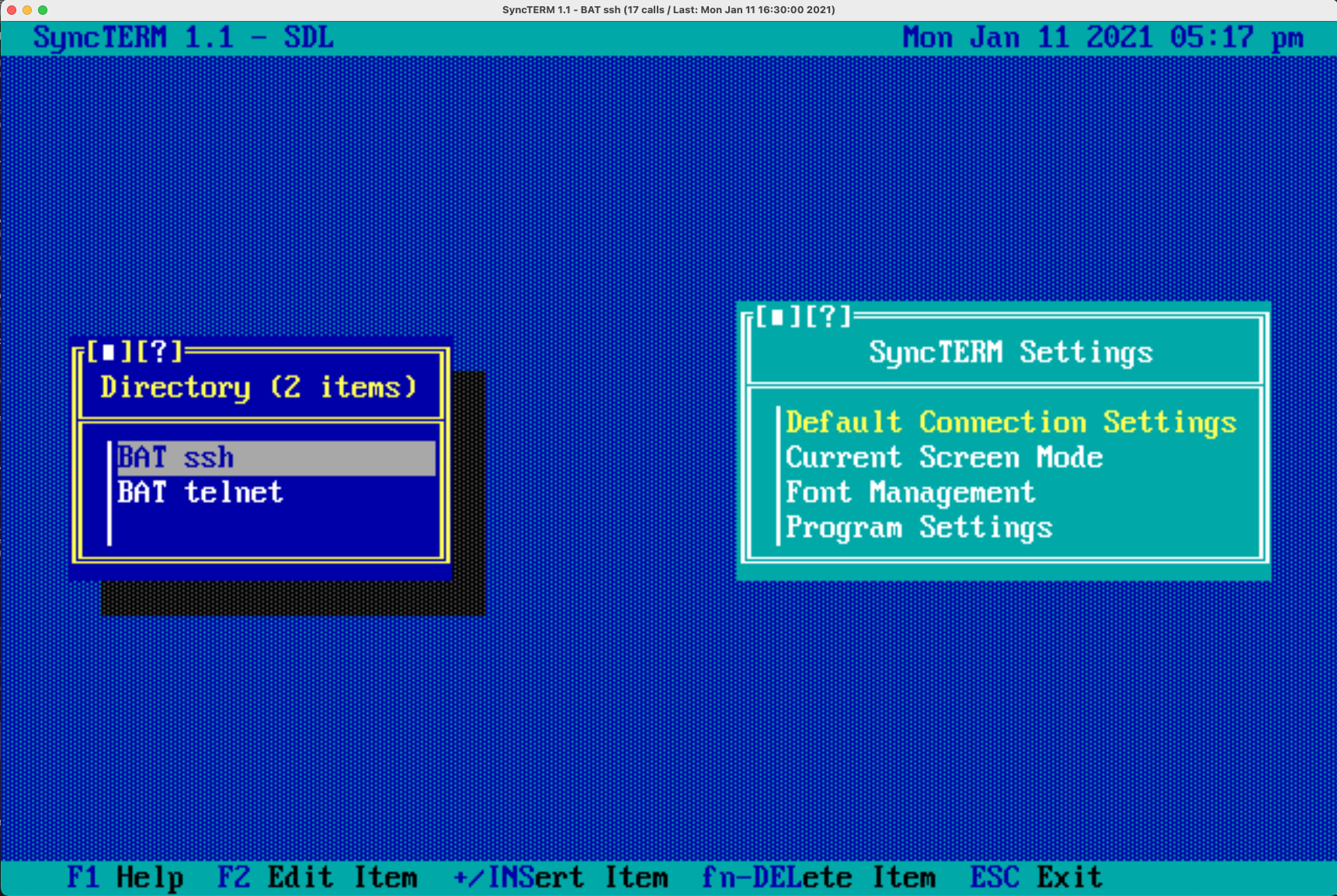

By the way, these escape sequences are still supported today by modern computers- for example, Linux and Mac users can try to enter this command:įinally, after disconnecting from the BBS, I can check the files I have downloaded. Which was looking surprisingly, not bad - special formatting and so-called ANSI escape codes allowed to make a pretty complex UI.
SYNCTERM BBS DOWNLOAD
After the successful login, it was possible to read mail, download or upload files using the text interface. On the other side, the access often was completely free. Because many BBSes were located at home, their services were often available only at night, for example from 0 to 7 am - if you wanted to check your mail, download or upload files, you had to wake up early, something which looks weird today. The speed varied from 300 bits/s in the 80s to 56600 bits/s in the 90s, calls were often possible only in the local area, otherwise, the telephone bills could be too high. Obviously, as in the case of any other phone call, this connection could be occupied by only one user at a time, others were just getting a “busy” signal and had to wait until the line will be free again. I’ve searched in Google using the words “public FTP list”, and got a website which has a pretty large list of open FTP sites: The FTP can be used today, for example, for remote server maintenance, but surprisingly, public anonymous FTPs are also available. This document also has internal links to the Transmission Control Protocol (TCP) and the Telnet Protocol, which were described in the “ARPA-Internet protocol handbook” in 1985 (when most of the people did not hear the word “Internet” at all). Of course, this protocol was not something immutable, lot’s of improvements were made, the phrase “FTP has had a long evolution over the years” was written in the “RFC 959” document published in 1985. Actually, there was no Internet at that time, computers were connected to the ARPA (Advanced Research Projects Agency) network, and there was an obvious demand to have a protocol for files exchange. The FTP (File Transfer Protocol) is not only “old”, but “ancient”, compared to modern standards - the first specification was published as RFC 114 on 16 April 1971. This tool will allow you to create fonts for use with SyncTERM.People were browsing online pages this way about 30 years ago Comes with 43 standard fonts and allows the BBS to change the current font *and* upload custom fonts.Supports character pacing for ANSI animation as well as the VT500 ESC[*r sequence to allow dynamic speed changes.
SYNCTERM BBS SERIAL

SYNCTERM BBS FULL
Full CGTerm Commodore 64 PETSCII support.Win32 version uses the Windows Console or SDL.*nix versions will run using SDL, X11, or using curses.Runs in full-screen mode on ALL platforms (ALT-Enter switches modes).


 0 kommentar(er)
0 kommentar(er)
